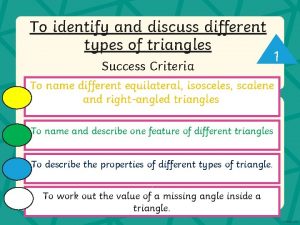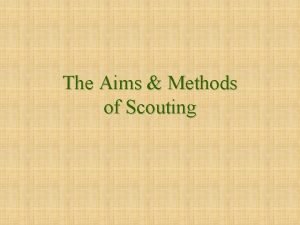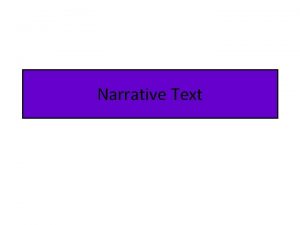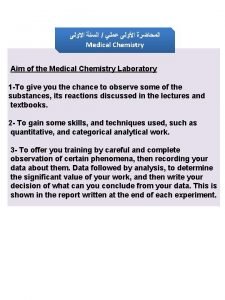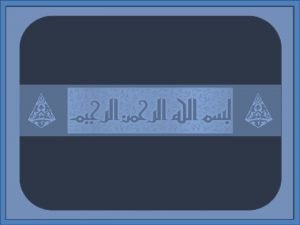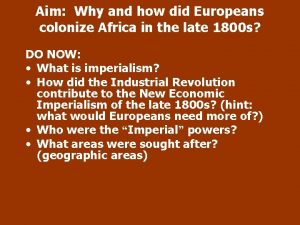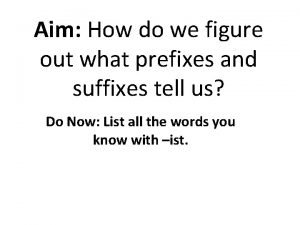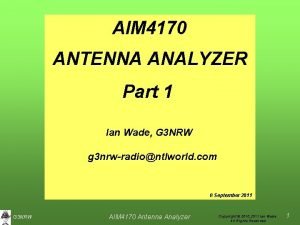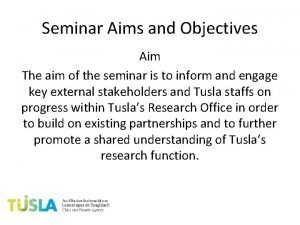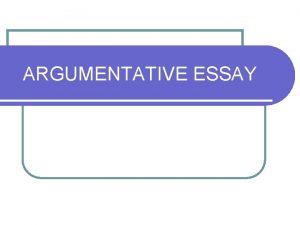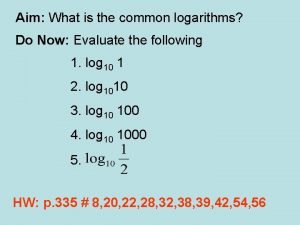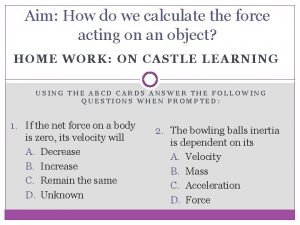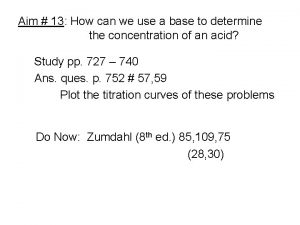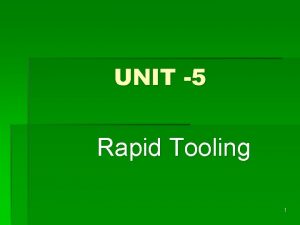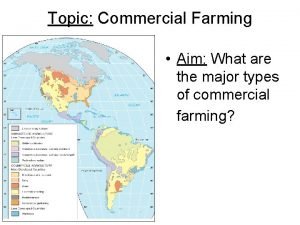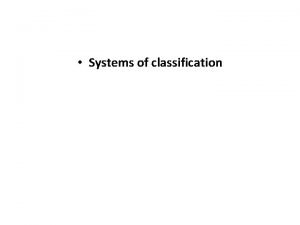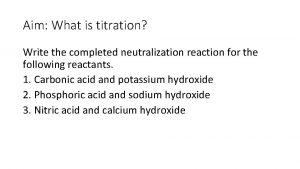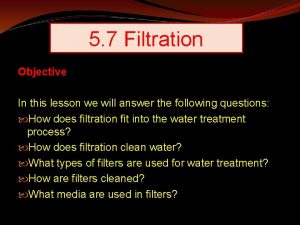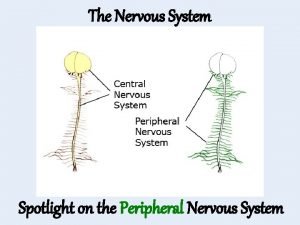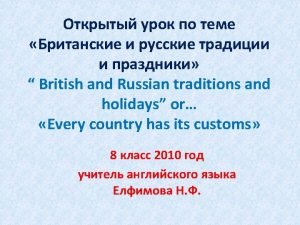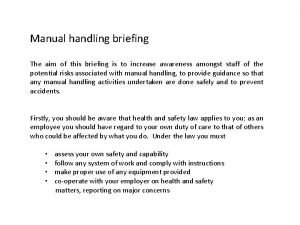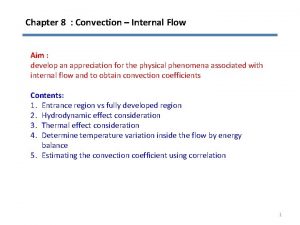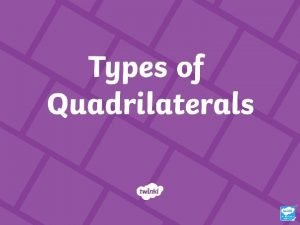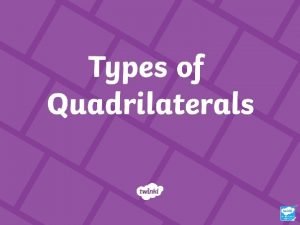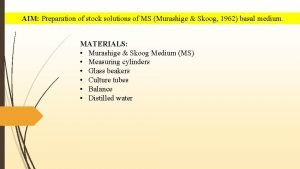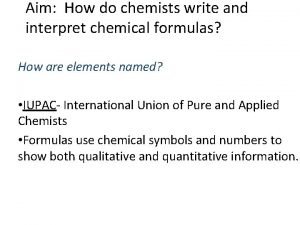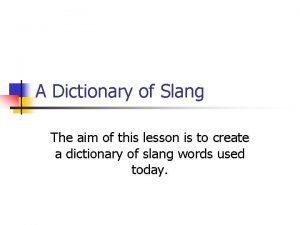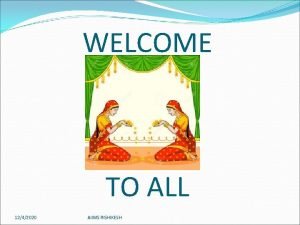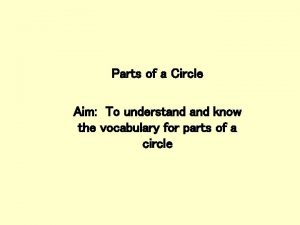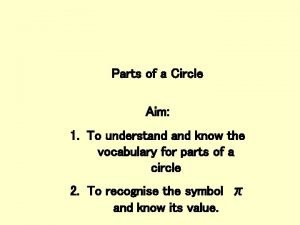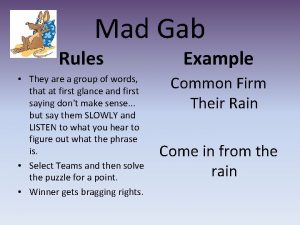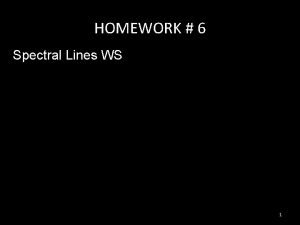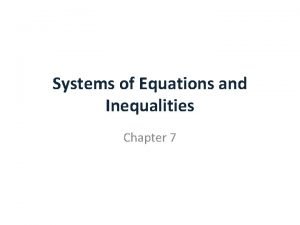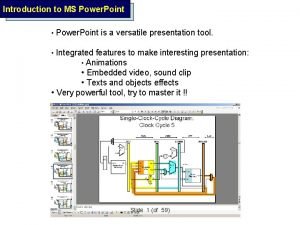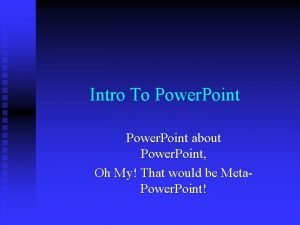Aim Of The Power Point This power point


























































































































































































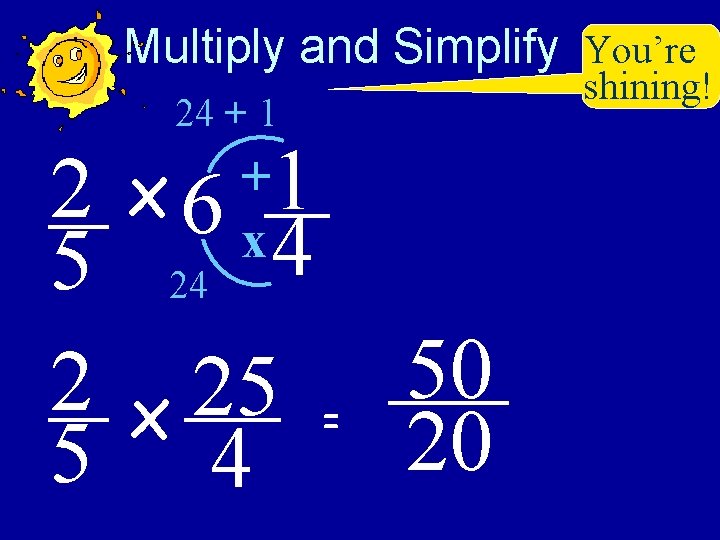
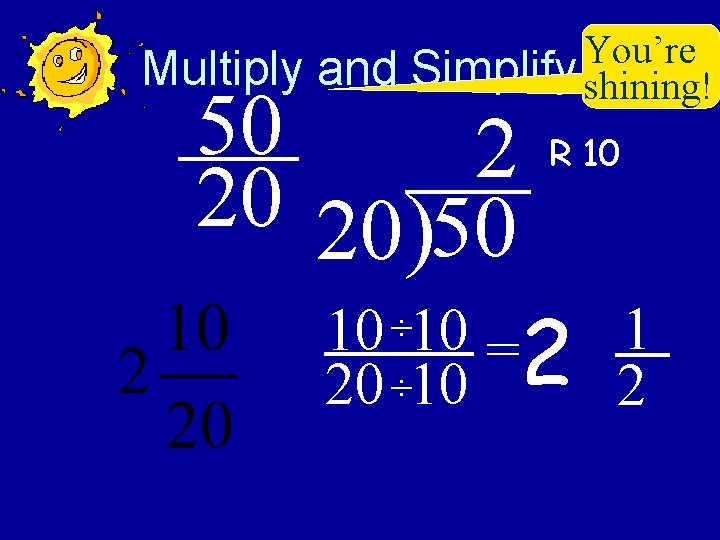
- Slides: 188

Aim Of The Power Point • This power point has been produced as the first step towards teaching numeracy across the curriculum in a consistent manner. • The power point has been designed for teachers to use as a reference in advance of teaching numeracy skills in their own subject or for parents as an aid to helping their offspring. • For any clarification on any of the topics please consult a member of the maths department.

Our Mission Statement: • Glen Urquhart High School is committed to raising the standards of numeracy of all of its students, so that they develop the ability to use numeracy skills effectively in all areas of the curriculum and the skills necessary to cope confidently with the demands of further education, employment and adult life.

• • • • Contents Number & Number Processes Subtraction Multiplication Division Decimals Fractions Equivalent & Simplifying Fraction of a Quantity Mixed Numbers & Improper Fractions Addition & Subtraction Multiplication & Division Information Handling Averages & Spread Frequency Tables Bar Graphs Line Graphs & Scatter Graphs Pie Charts

Contents • Number & Number Processes • Decimals • Fractions • Information Handling

• A current definition of numeracy: • Numeracy is a proficiency which is developed mainly in mathematics but also in othesubjects. It is more than an ability to do basic arithmetic. It involves developing confidence and competence with numbers and measures. It requires understanding of the number system, a repertoire of mathematical techniques, and an inclination and ability to solve quantitative or spatial problems in a range of contexts. • Numeracy also demands understanding of the ways in which data are gathered by counting and measuring, and presented in graphs, diagrams, charts and tables.

Number Processes Addition Subtraction by decomposition Long Multiplication Long Division 07 -Mar-21

Decimals Add & Subtract Decimals Multiplying Decimals by 10, 1000 Dividing Decimals by 10, 100 Multiplying Decimals Dividing Decimals Rounding to Any Number of Decimal Places Rounding to Significant Figures 07 -Mar-21

Fractions Simplifying Fractions of a quantity Percentages Finding a Percentage (Calculator) Finding (Simple) Percentages Types of fractions Add and Subtract fractions Multipy and Divide fractions

Fractions Simplifying Fractions of a quantity Percentages Finding a Percentage (Calculator) Finding (Simple) Percentages Adding and subtracting fractions Multiplying and Dividing fractions

26 + 57 Remember to keep all Tens and Units in line! 26 +57 83 1 Write down the 3 units Start on the right – add up the units 6 + 7 = 13 Add up all the tens Carry the 1 ten to the tens column

Subtraction by decomposition 7 2 4 - 5 17 4 - 89

83 - 26



83 – 26 70 - 80 20 50 13 6 7 = 57

83 – 26 7 - 1 83 26 57


94 – 57 Borrow 10 from here Put it here 80 - 90 50 30 14 7 7 = 37

94 - 57 8 - 1 4 -7 we can’t do so borrow from next column and 9 goes down to 8 94 57 37 14 -7=7

94 - 57 Quick way to set it out 8 - 1 94 57 37

300 - 59 0 -9 we can’t do so borrow from next column : can’t so borrow from 3 rd column which goes down to 2 and can only give this to adjacent column 2 1 9 1 300 - 59 2 4 1 2 -0=0 9 -5=4 10 -9=1 We can now borrow from the second column to give one to the first column

Written Method - Decomposition Example 3482 - 1735 71 3482 -1735 7 711 3482 -1735 47 2 1 111 71 1 1 3482 -1735 1747 2 -1=1 2 -5, can’t do. Borrow 1 from the next column. 12 -5=7 7 -3=4 4 -7, can’t do. Borrow 1 from the next column. 14 -7=7

Long multiplication • Method 1 Chunking

18 x 17 replace with 4 easy multiplications • Split 18 into 10 and 8 • Split 17 into 10 and 7 • Total 4 multiplications • 100+70+80+56 • answer=306 X 10 8 10 100 80 7 70 56

23 x 46 replace with 4 easy multiplications • Split 23 into 20 and 3 • Split 46 into 40 and 6 • Total 4 multiplications • 800+120+60+18 • answer=1058 X 20 3 40 800 120 6 60 18

10 10 18 8 10 x 10 10 x 8 = 100 = 80 17 7 18 x 17 100 80 70 7 x 10 7 x 8 +56 = 70 = 56 306

Long Multiplication Firstly write the sum correctly: 24 x 34 That means units over units and tens over tens. This makes the working out easier.

Short Division The quick way to divide by a single digit.

54 ÷ 3 We need to write this as: 3)5 4

1 3)5 4 2 5 divided by 3 is 1. We can get 1 group of 3 out of 5 with 2 left over 3 6 9 12 15 18 21 24 27 . 30 2 5

18 3)5 4 2 24 divided by 3 is 8. We can get 8 groups of 3 out of 24 with none left over 3 6 9 12 15 18 21 24 27 . 30 8

2 3 R 2 4)9 4 1 9 divided by 4 is 2. We can get 2 groups of 4 out of 9 with 1 left over 14 divided by 4 is 3. We can get 3 groups of 4 out of 14 with 2 left over. 4 8 12 16 20 24 28 32 36 40 1 9 14 2

2 3. 5 4)9 4. 0 1 2 9 tens divided by 4 is 2 tens. There is 1 ten left over. 14 divided by 4 is 3. There is a remainder of 2. 2 units divided by 4 is 0. 5.

Long Multiplication 24 x 34 96 1 Then the first part is done as normal. Bottom Unit x Top unit. Bottom Unit x Top Tens.

Long Multiplication 24 x 34 96 720 1 1 Then, because we are multiplying by ten we write a 0 under the units column. Then carry on as normal Bottom Tens x Top Unit Bottom Tens x Top Tens

Long Multiplication 24 x 34 96 720 816 1 1 1 Then, underline the last piece of working you did. Then finally perform a simple addition of the two numbers between the lines.

Long Division • Long division is as simple as memorizing the people in this family. Dad Mum Sister Rover Brother

Long Division • Each person represents a step in the long division process. 3. Subtract 1. Divide Sister 4. Bring down Dad Brother 2. Multiply 5. Repeat or Remainder Mum Rover

• 947 divided by 2 • 947 is the dividend • 2 is the divisor • The whole number part of the answer is the quotient and there may be a remainder left over

Step 1 in Long Division 1. Divide Dad • Divide 2 into first number • Think how many 2’s will fit into 9. • Write that number directly above the number you divided into. 4 2)947 How many 2’s will go into 9?

Step 2 in Long Division 2. Multiply mum • Multiply the divisor times the first number in the answer. 4 2)947 • Write your answer directly under the 9 or the number you just divided into. 8 2 x 4=8

Step 3 in Long Division 3. Subtract Sister • Draw a line under the 8. • Write a subtraction sign next to the 8. 4 2)947 8 1 • Subtract 8 from 9. • Write your answer directly below the 8.

Step 4 in Long Division 4. Bring down 4 2 ) 9 4 7 • Go to the next number in Brother the dividend to the right of the 9. • Write an arrow under the 4. 8 14 • Bring the 4 down next to the 1.

Step 5 in Long Division 5. Repeat or Remainder Rover • This is where you decide whether you repeat the 5 steps of division. 4 2)947 8 14 • If your divisor can divide into your new number, 14, or if you have numbers in the dividend that have not been brought down, you repeat the 5 steps of division.

Step 5 in Long Division 5. Repeat or Remainder Rover • Since there are no more numbers to bring down & 2 will not divide into 1, you do not repeat the steps of division. • The number left over, 1, becomes the remainder. 47 3 2)947 8 14 14 07 6 1 R 1

You did it! 47 3 2)947 You’re so smart! 8 14 14 07 6 1 R 1 You’re awesome! Cool Dude! Wolf!

Multiplying and Dividing Decimals by 10, 100, and 1, 000

The Basics: • When you multiply by 10, 100, or 1, 000, you can move the decimal point to the right. • The number of decimal places you move is the same as the number of zeroes you are multiplying by. • When you divide by 10, 100, or 1, 000, you can move the decimal point to the left. Move the decimal point once for each zero you are dividing by.

1. 492 x 100 Move the decimal to the right: two spaces. 149. 2

2, 124. 94 ÷ 1, 000 Move the decimal to the left: three spaces. 2. 12494

4. 2 ÷ 100 Move the decimal point to the left: two spaces. Add a zero for the second space. . 042

15. 36 x 1, 000 Move the decimal point to the right: three spaces. Add a zero for the third space. 15, 360

Decimals Addition & Subtraction Learning Intention 1. To explain how to add and subtract decimal numbers. Success Criteria 1. Remember to keep decimal point in line. 2. Make use of trailing 0’s when needed. 07 -Mar-21

Decimals Addition & Subtraction Example : 3. 2 + 0. 487 + 5. 73 Keep point in line 07 -Mar-21

Decimals Addition & Subtraction Example : 6. 2 – 3. 19 + 1. 783 Add first Then subtract 07 -Mar-21

Steps for Multiplying Decimals 1. Ignore decimals and multiply as before 2. Count the number of digits after the decimal in the original problem and make sure the answer has the same number of digits after the decimal.

Decimals Simple Multiplication Example 1 : 0. 6 x 0. 4 6 x 4 = 24 0. 24 2 digits after decimal place Example 2 : 0. 09 x 0. 3 07 -Mar-21 9 x 3 = 27 0. 027 3 digits after decimal place

Decimals Simple Multiplication Example 3 : 0. 071 x 0. 5 71 x 5 = 355 4 digits after decimal place 07 -Mar-21 0. 0355

Simplify the following: 1. 0. 07 x 0. 03 2. 0. 42 x 6 7 x 3 42 x 6 21 252 4 decimal places 0. 0021 2 decimal places 2. 52

3. 3. 12 x 0. 05 312 x 5 1560 4 decimal places 0. 1560 4. 0. 02 x 1. 39 2 x 139 278 4 decimal places 0. 0278

5. 1. 22 1. 2 x 1. 2 12 x 12 6. (0. 3)2 0. 3 x 0. 3 3 x 3 144 9 1. 44 0. 09

7. 0. 5 x 22 8. 10 x 0. 314 5 x 22 10 x 314 110 3140 11. 0 3. 14



Steps for dividing by whole numbers 1. Use long division as if there were no decimal point involved. 2. If necessary, add zeros after last digit in the decimal. 3. Place decimal point directly above the decimal point in the problem.

Divide the following: 4 65 0 32 52 48 40 40 0 7 87 28 34 32 28 28 0

Divide the following: 6 66 198 217 198 198 0

Divide the following: 33 66 66 66 0

Decimals Division of a Decimal Do not attempt to divide by a decimal, multiply the divisor so it is a whole number first. Example 1 : 3. 5 ÷ 0. 7 35 ÷ 7 = 5 x 10 Example 2 : 0. 8 ÷ 0. 2 07 -Mar-21 8÷ 2=4

Decimals Division of a Decimal Do not attempt to divide by a decimal, multiply the divisor so it is a whole number first. Example 3 : 0. 036 ÷ 0. 04 3. 6 ÷ 4 = 0. 9 x 100 Example 4 : 24 ÷ 3000 07 -Mar-21 24 ÷ 3÷ 1000 = 0. 008

Steps for dividing by decimals numbers 1. Change divisor to a whole number by moving both numbers the same amount of digits 2. Divide as before

5. . 3778 ÷. 25 and round to the nearest When rounding make hundredth: 1 5 11 1. 51 sure to calculate one digit past required place value. 0 25 127 125 28 25 30 25

Decimals Rounding to Any Number of Decimal Places When rounding to : 1 decimal place look at 2 nd decimal figure e. g. 2. 46 2 decimal place look at 3 rd decimal figure e. g. 6. 456 3 decimal place look at 4 th decimal figure e. g. 3. 7846 4 decimal place look at 5 th decimal figure e. g. 13. 1146 07 -Mar-21

Decimals Rounding to Any Number of Decimal Places www. mathsrevision. com Example : The number 4. 2615937 Rounded to 1 decimal place, the number is 4. 3 Rounded to 2 decimal place, the number is 4. 26 Rounded to 3 decimal place, the number is 4. 262 Rounded to 4 decimal place, the number is 4. 2616 07 -Mar-21 Created by Mr. Lafferty Maths Dept.

Significant Numbers Learning Intention 1. To understand the term significant number for decimals and whole numbers. 07 -Mar-21 Success Criteria 1. To know the meaning of significant number. 2. Apply knowledge to problems.

Significant Numbers In mathematics a figure or digit is significant if it gives an idea of both: (i) Quantity (ii) Accuracy IMPORTANT : If zero’s are employed just to position the decimal point then they are considered NOT significant. e. g. 506 cm Has 3 significant figures. 50. 6 cm Has 3 significant figures. 0. 506 cm Has 3 significant figures. 0. 00506 cm Has 3 significant figures. 07 -Mar-21

Significant Numbers IMPORTANT : When dealing with WHOLE NUMBERS you need More information before you can tell if trailing zero’s are significant. Question ? How many significant figures is this number to. 360 Is it 2 or 3 !!! 3 If I said 359 to the nearest ten is 360. How many significant figures. 2 If I said there are 360 deg. in a circle. How many significant figures. YOU NEED TO KNOW THE CONTEXT OF THE QUESTION WHEN DEALING WITH WHOLE NUMBERS WITH TRAILING ZEROS.

WORK OUT WHAT THE ZERO MEANS Significant Figures Decimals 0. 001090 To the left of The number Middle of the number To the right of the number Always Significant Not Significant Always Significant Whole Numbers 03060 To the left of The number Middle of the number ? Depends More Info. Not Significant Always Significant Read Question 07 -Mar-21

Fractions A Fraction consists of 2 parts. 3 5 Top number is called the numerator Bottom number is called the denominator

Fractions Write down the fraction that is shaded in light blue.

Fractions It is possible to find a fraction equivalent to any fraction that you have by multiplying the numerator and the denominator by any number. Find a fraction equivalent to : x 3 x 2

Fractions We can sometimes simplify a fraction by finding a HCF between the numerator and denominator. Simplify the fractions below : ÷ 2 ÷ 3

Fractions of a quantity Learning Intention 1. To explain the 2 step process of finding a fraction of a quantity. Success Criteria 1. To know the 2 step for finding a fraction of a quantity. 2. Be able to calculate the fraction of a quantity.

Fractions of a quantity Q. Do the calculations below. of 120 Simply divide by the bottom number

Fractions of a quantity Q. Do the calculation below. of 24 Simply divide by the bottom number Then multiply the answer by top number Step 1: Step 2:

Fractions of a quantity Q. Do the calculation below. of 360 Simply divide by the bottom number Then multiply the answer by top number Step 1: Step 2:

Percentages Learning Intention 1. To explain what the term percentage means and how it is connected to a fraction and a decimal. Success Criteria 1. To understand the term percentage. 2. Understand connection between percentage, fraction and decimal. 3. Find a percentage of a quantity.

31 out of a 100 Percentages When a shape is divided into 100 ‘bits’ each bit is called “ 1 percent” 31 % means 7 out of a 100

Percentages Q. Write down the following as a fraction and a decimal. 27% 15% 2%

Percentages Q. Change the fractions to percentages Simply do the division the multiply by 100 Step 1: Step 2:

Percentages Q. Paul scored 24 out of 30 in English and 36 out of 40 in Maths. Find percentage of each and say which he is best at? Simply do the division the multiply by 100 Step 1: Step 2: Maths

Percentages (Calculator) Learning Intention 1. To understand how to calculate a percentage using a calculator. Success Criteria 1. Use a calculator to calculator. 2. Show all working.

of means times Q. Percentages Find 17% of £ 450 Remember money 2 decimal places = £ 76. 50 Calculator Keys 1 7 1 0 0 x 4 5 0 = 76. 5

of means times Q. Percentages Find 4% of £ 70 Remember money 2 decimal places = £ 2. 80 Calculator Keys 4 1 0 0 x 7 0 = 2. 8

Simple Percentages Learning Intention Success Criteria 1. To explain some simple percentages. 1. To know the simple percentages. 2. Calculate simple percentage without a calculator.

Simple Percentages Copy down and learn the following basic percentages

Percentages Q. Find 25% of £ 40

Percentages Q. Find 5% of £ 300

Simple Percentages Learning Intention 1. To explain some more basic percentages. Success Criteria 1. To know the basic percentages. 2. Calculate basic percentage without a calculator.

Simple Percentages Copy down and learn the following basic percentages

Percentages Q. Find 30% of £ 40

Percentages Q. Find 75% of £ 600

These numbers are called whole numbers 1 15 6 22 3 47 MALT© 2006 Maths/Fractions Slide Show : Lesson 1

These numbers are called fractions 1 2 3 15 5 6 12 22 2 3 4 7 MALT© 2006 Maths/Fractions Slide Show : Lesson 1

Shout whole number or fraction when you see each number Ready ? MALT© 2006 Maths/Fractions Slide Show : Lesson 1

whole number or fraction 25 MALT© 2006 Maths/Fractions Slide Show : Lesson 1

whole number or fraction whole number MALT© 2006 Maths/Fractions Slide Show : Lesson 1

whole number or fraction 3 MALT© 2006 Maths/Fractions Slide Show : Lesson 1

whole number or fraction whole number MALT© 2006 Maths/Fractions Slide Show : Lesson 1

whole number or fraction 2 3 MALT© 2006 Maths/Fractions Slide Show : Lesson 1

whole number or fraction MALT© 2006 Maths/Fractions Slide Show : Lesson 1

whole number or fraction 1 8 MALT© 2006 Maths/Fractions Slide Show : Lesson 1

whole number or fraction 27 MALT© 2006 Maths/Fractions Slide Show : Lesson 1

whole number or fraction whole number MALT© 2006 Maths/Fractions Slide Show : Lesson 1

When a number includes both whole numbers and fractions 1 1 2 MALT© 2006 Maths/Fractions Slide Show : Lesson 1

It is called a mixed number 1 1 2 MALT© 2006 Maths/Fractions Slide Show : Lesson 1

Here are some mixed numbers 2 1 3 6 8 2 5 5 4 9 2 MALT© 2006 Maths/Fractions Slide Show : Lesson 1 1 4

Shout what the number is either whole number fraction mixed number MALT© 2006 Maths/Fractions Slide Show : Lesson 1

whole number , fraction or mixed number 4 MALT© 2006 Maths/Fractions Slide Show : Lesson 1

whole number , fraction or mixed number 4 8 MALT© 2006 Maths/Fractions Slide Show : Lesson 1

whole number , fraction or mixed number 51 MALT© 2006 Maths/Fractions Slide Show : Lesson 1

whole number , fraction or mixed number 2 2 5 MALT© 2006 Maths/Fractions Slide Show : Lesson 1

whole number , fraction or mixed number 14 1 4 MALT© 2006 Maths/Fractions Slide Show : Lesson 1

So a mixed number is both whole numbers and fractions together. MALT© 2006 Maths/Fractions Slide Show : Lesson 1

Mixed numbers can be written differently. MALT© 2006 Maths/Fractions Slide Show : Lesson 1

1 2 1 This number can also be written as 3 2 MALT© 2006 Maths/Fractions Slide Show : Lesson 1

1 2 1 can you explain why? 3 2 MALT© 2006 Maths/Fractions Slide Show : Lesson 1

1 2 1 3 2 MALT© 2006 Maths/Fractions Slide Show : Lesson 1

2 1 4 9 4 MALT© 2006 Maths/Fractions Slide Show : Lesson 1

Fractions A fraction, like, where the numerator is bigger than the denominator is called a ‘Top-Heavy’ fraction. A number, like, consisting of a ‘whole number’ part and a ‘fraction’ part is called a Mixed fraction 07 -Mar-21

Mixed to Top Heavy Changing a mixed fraction to a top-heavy. 5 wholes are (5 4 ) 20 quarters and we have an extra 3 quarters so so 5 4 23 quarters 3 7 5 37 fifths 2 7 wholes are (7 5 ) 35 fifths and we have an extra 2 fifths 07 -Mar-21

here is the link and you get 16 thirds 5 1 3 5 x 3 = 15 16 3 then add the 1 MALT© 2006 Maths/Fractions Slide Show : Lesson 1

here is the link and you get 12 fifths 2 2 5 2 x 5= 10 12 5 then add the 2 MALT© 2006 Maths/Fractions Slide Show : Lesson 1

here is the link and you get 29 sixths 4 5 6 4 x 6 = 24 29 6 then add the 5 MALT© 2006 Maths/Fractions Slide Show : Lesson 1

And this one…. 1 3 4 ? 4 MALT© 2006 Maths/Fractions Slide Show : Lesson 1

Try these with a friend…. . 2 2 3 ? 3 MALT© 2006 Maths/Fractions Slide Show : Lesson 1

And this one…. 4 1 2 ? 2 MALT© 2006 Maths/Fractions Slide Show : Lesson 1

And this one…. 2 4 5 ? 5 MALT© 2006 Maths/Fractions Slide Show : Lesson 1

And this one…. 1 6 8 ? ? MALT© 2006 Maths/Fractions Slide Show : Lesson 1

now try these WALT: to understand mixed numbers 1 2 3 3 3 6 2 2 4 5 1 3 2 5 6 four and a half three and two thirds five and a quarter MALT© 2006 Maths/Fractions Slide Show : Lesson 1

answers 5 3 21 6 10 4 16 3 17 6 nine halves eleven thirds twenty one quarters MALT© 2006 Maths/Fractions Slide Show : Lesson 1

Add / Sub Fractions You can only add or subtract fractions if: DENOMINATORS (bottom numbers) ARE THE SAME NUMBER Example 1 07 -Mar-21 Example 2

Adding Fractions of the same type Examples 07 -Mar-21

Adding Fractions of the same type Examples 07 -Mar-21

Add Fractions When dealing with mixed fractions deal with ‘whole’ part first then the fraction part 07 -Mar-21

Subtract Fractions When dealing with mixed fractions deal with ‘whole’ part first then the fraction part 07 -Mar-21

Harder Fractions Learning Intention 1. To understand how to add and subtract fractions with different denominators. Success Criteria 1. Apply ‘ kiss and smile’ method. 2. Convert top heavy fractions to mixed fractions. 3. Simplify fractions. 07 -Mar-21

We are going to Harder use the kiss and smile method Fractions How can we add /subtract fractions that have different denominators Step 1 : Do the smile Step 2 : Do the kiss Step 3 : Add/Subtract the numerator and simplify 07 -Mar-21

Harder Fractions Step 1 : Do the smile Step 2 : Do the kiss Example 1 Step 3 : Add/Subtract the numerator and simplify 07 -Mar-21 4 +2 8 ÷ 2

Harder Fractions 25 - 6 30 07 -Mar-21

Harder Fractions 20 + 18 24 ÷ 2 07 -Mar-21

Harder Fractions 3 +4 6 07 -Mar-21

Harder Fractions 21 - 16 24 07 -Mar-21

Most Difficult Fractions 18 + 20 24 07 -Mar-21

Top Heavy to Mixed Quick method NUMERATOR DENOMINATOR can be written as 7 3 remainder 1 07 -Mar-21

Top Heavy to Mixed General means seven thirds 07 -Mar-21

Top Heavy to Mixed means seventeen fifths 07 -Mar-21

Top Heavy to Mixed Quick method NUMERATOR DENOMINATOR can be written as 17 5 remainder 2 07 -Mar-21

Subtracting Fractions 3 -8 12 07 -Mar-21

Most Difficult Fractions 6 -5 30 07 -Mar-21

Subtract Fractions When dealing with mixed fractions deal with ‘whole’ part first then the fraction part 07 -Mar-21

Multiplying Fractions How much is one-half of one-half? we show one-half of a circle. To find one- half of one- half, we divide the half in half. We see this equals one quarter. Written out the Problem looks like this: 1 X 1 2 2 = 1 4

Multiplying Fractions • When you multiply two fractions that are between 0 and 1 the answer is smaller than both fractions. ½x¾= Look at the diagram on the next slide to understand why.

Multiplying Fractions Conceptual Understanding ½x¾= ¼ ¼ ¼ 1/8 1/8 ¼

How to Find a Fraction of a Fraction • The first thing to remember is “of” means multiply in mathematics. of = x

How to Find a Fraction of a Fraction • Step 1 - When you see a fraction problem you know when you read “of” in the problem you multiply. 1 of 4 x 2 9

How to Find a Fraction of a Fraction • Step 2 – Multiply your top numbers (numerators) straight across. 1 x 4 = 4 2 9

• How to Find a Fraction of a Fraction Step 3 – Then multiply your bottom numbers (denominators )straight across. 1 x 4 = 4 2 9 18

• How to Find the Fraction of a Fraction Step 4 – Simplify your answer. In this case we reduce. 1 x 4 = 4 ÷ 2= 2 2 9 18 ÷ 2 9

Multiply and Simplify ÷ 1 of 9 9 3 3 x = = 6 5 30 ÷ 3 10

Multiply and Simplify 8 of 3 24 12 2 ÷ x = = 9 4 36 ÷ 12 3

Example 2 3 4 2 x 9 6 = 36 1 = 6 This fraction can be reduced. Divide the numerator and denominator by 6.

Multiplying by a Whole Number If you want to multiply a fraction by a whole number, turn your whole number into a fraction by putting it over 1. If your answer is improper (top heavy), divide the bottom into the top. 4 20 80 16 x = = 5 5 1

Multiplying Fractions Multiplying basic fractions 1. Multiply the (numerators ) top numbers 2. Multiply the (denominators) bottom numbers 3 Simplify Example 1 07 -Mar-21 Example 2

Multiplying Fractions Multiplying basic fractions Example 3 Example 4

Another Example 15 x 1 5 15 = = 1 6 6 2 15 and 6 are in the 3 times table 2 R 1 25 Five halves is top heavy so we divide the bottom into the top. 2 1 2

Simplifying Factors • Before you multiply, you can make the problem simpler. • You can find the largest table both numbers have in common • divide the top number and bottom number by this number, and rewrite the problem.

Example 1 5 x 81 16 2 7 5 14 In the second fraction, 8 and 16 have table 8 in common 8 ÷ 8 = 1 and 16 ÷ 8 = 2 Now, multiply with the simpler numbers. Top 5 x 1 = 5 and bottom 7 x 2 = 14.

Example 2 12 5 x 3 12 6 The top of the first fraction and the bottom of the second fraction have a table in common , 2. 2 ÷ 2 = 1, and 12 ÷ 2 = 6. Now, multiply: 5 18

How to Find a Fraction of a Mixed Number • Step 1 - When you see a fraction problem you know when you read “of” in the problem you multiply. 1 of 4 x 3 2 9

How to Find a Fraction of a Mixed Number • Step 2 – Change the mixed number to an improper ( top heavy) fraction. 27 + 4 1 x 3 4 31 2 27 9 9 + x

How to Find a Fraction of a Mixed Number • Step 3 – Multiply the numerators straight across. 1 x 31 = 31 2 9

How to Find a Fraction of a Mixed Number • Step 4 – Multiply the denominators straight across. 1 x 31 = 31 2 9 18

How to Find a Fraction of a Mixed Number • Step 5 – Simplify your answer. In this case change the improper fraction to a mixed number. 1 R 13 1 x 31 = 31 18)31 2 9 18 13 = 1 18

Multiply and Simplify 35 + 4 R 11 1 + 1 x 5 x 4 28) 39 4 35 7 11 39 39 1 x = = 1 28 4 7 28

Multiply and Simplify 24 + 3 4 x 6 3 27 = 108 5 24 4 4 ÷ 20 8 4= 2 5 20 ÷ 4 5 20)108 + x

Multiply and Simplify You’re 24 + 1 2 x 6 1 4 5 24 2 x 25 = 50 20 5 4 + x shining!

Multiply and You’re Simplify shining! 50 2 20 20)50 R 10 1 10 ÷ 10 = 2 20 ÷ 10 2
 Triangle of power
Triangle of power Power bi training powerpoint
Power bi training powerpoint Point point power
Point point power Hình ảnh bộ gõ cơ thể búng tay
Hình ảnh bộ gõ cơ thể búng tay Ng-html
Ng-html Bổ thể
Bổ thể Tỉ lệ cơ thể trẻ em
Tỉ lệ cơ thể trẻ em Chó sói
Chó sói Thang điểm glasgow
Thang điểm glasgow Alleluia hat len nguoi oi
Alleluia hat len nguoi oi Các môn thể thao bắt đầu bằng từ đua
Các môn thể thao bắt đầu bằng từ đua Thế nào là hệ số cao nhất
Thế nào là hệ số cao nhất Các châu lục và đại dương trên thế giới
Các châu lục và đại dương trên thế giới Cong thức tính động năng
Cong thức tính động năng Trời xanh đây là của chúng ta thể thơ
Trời xanh đây là của chúng ta thể thơ Mật thư anh em như thể tay chân
Mật thư anh em như thể tay chân Phép trừ bù
Phép trừ bù độ dài liên kết
độ dài liên kết Các châu lục và đại dương trên thế giới
Các châu lục và đại dương trên thế giới Thơ thất ngôn tứ tuyệt đường luật
Thơ thất ngôn tứ tuyệt đường luật Quá trình desamine hóa có thể tạo ra
Quá trình desamine hóa có thể tạo ra Một số thể thơ truyền thống
Một số thể thơ truyền thống Cái miệng xinh xinh thế chỉ nói điều hay thôi
Cái miệng xinh xinh thế chỉ nói điều hay thôi Vẽ hình chiếu vuông góc của vật thể sau
Vẽ hình chiếu vuông góc của vật thể sau Biện pháp chống mỏi cơ
Biện pháp chống mỏi cơ đặc điểm cơ thể của người tối cổ
đặc điểm cơ thể của người tối cổ V cc cc
V cc cc Vẽ hình chiếu đứng bằng cạnh của vật thể
Vẽ hình chiếu đứng bằng cạnh của vật thể Tia chieu sa te
Tia chieu sa te Thẻ vin
Thẻ vin đại từ thay thế
đại từ thay thế điện thế nghỉ
điện thế nghỉ Tư thế ngồi viết
Tư thế ngồi viết Diễn thế sinh thái là
Diễn thế sinh thái là Các loại đột biến cấu trúc nhiễm sắc thể
Các loại đột biến cấu trúc nhiễm sắc thể So nguyen to
So nguyen to Tư thế ngồi viết
Tư thế ngồi viết Lời thề hippocrates
Lời thề hippocrates Thiếu nhi thế giới liên hoan
Thiếu nhi thế giới liên hoan ưu thế lai là gì
ưu thế lai là gì Hươu thường đẻ mỗi lứa mấy con
Hươu thường đẻ mỗi lứa mấy con Khi nào hổ mẹ dạy hổ con săn mồi
Khi nào hổ mẹ dạy hổ con săn mồi Hệ hô hấp
Hệ hô hấp Từ ngữ thể hiện lòng nhân hậu
Từ ngữ thể hiện lòng nhân hậu Thế nào là mạng điện lắp đặt kiểu nổi
Thế nào là mạng điện lắp đặt kiểu nổi Dollz aim
Dollz aim Aim portal osu
Aim portal osu Transformer construction
Transformer construction Different types of triangles
Different types of triangles Aims of scouting
Aims of scouting Aim suffix
Aim suffix Aimrad format
Aimrad format Projection welding diagram
Projection welding diagram Aim isen
Aim isen Simple distillation conclusion
Simple distillation conclusion Mudaliyar commission
Mudaliyar commission Aim project management
Aim project management Doc10066
Doc10066 Narrativ text
Narrativ text Aim sample
Aim sample Micro lesson definition
Micro lesson definition Aim in chemistry
Aim in chemistry Kothari commission 1964
Kothari commission 1964 Indian education commission 1964
Indian education commission 1964 Ndb service volumes
Ndb service volumes Aviation system block upgrades
Aviation system block upgrades Legal aid meaning aim and objective
Legal aid meaning aim and objective Aim of filtration
Aim of filtration Health and social care unit 5 coursework
Health and social care unit 5 coursework Learning aim c btec business
Learning aim c btec business Unit 14 learning aim d
Unit 14 learning aim d Unit 14 learning aim d health and social care
Unit 14 learning aim d health and social care Aims of pollution
Aims of pollution Write aims and objectives of the creation of pakistan
Write aims and objectives of the creation of pakistan Spartan aim
Spartan aim What is previewing
What is previewing Open door policy aim
Open door policy aim Difference between observation and inference
Difference between observation and inference Suffix -acy
Suffix -acy Aim 4170
Aim 4170 Aim2flourish interview questions
Aim2flourish interview questions Vowel teams word list
Vowel teams word list Objectives for seminar
Objectives for seminar What is health psychology
What is health psychology Interphase
Interphase I did or i done
I did or i done Define the health education
Define the health education Health and social care component 2 learning aim b example
Health and social care component 2 learning aim b example Matt rosenberg md
Matt rosenberg md Laney et al evaluation
Laney et al evaluation Goals for clinical supervision
Goals for clinical supervision Aim of argumentative essay
Aim of argumentative essay Aim scientific method
Aim scientific method Aim what
Aim what Aim 12 forces
Aim 12 forces Aim 13
Aim 13 Aim for success
Aim for success Disadvantages of objectives
Disadvantages of objectives Dtm rapid tool process
Dtm rapid tool process Tcpxtract
Tcpxtract Aim in psychology
Aim in psychology What is the main aim of commercial farming?
What is the main aim of commercial farming? Augustan and romantic literature
Augustan and romantic literature The great aim of education is not knowledge
The great aim of education is not knowledge Eubacteria
Eubacteria Components of rch phase 2
Components of rch phase 2 Elizabeth wiredu
Elizabeth wiredu Past perfect tense of review
Past perfect tense of review The value of education
The value of education Learning target
Learning target What is fixation of tissue
What is fixation of tissue Qualifying expedition aim
Qualifying expedition aim Emeril
Emeril Direct method teaching
Direct method teaching Aims and objectives of teaching economics
Aims and objectives of teaching economics What is the titration formula
What is the titration formula Aim in biology
Aim in biology Aim aztec
Aim aztec Types of aim
Types of aim Aim ratio
Aim ratio Aim45
Aim45 Objectives of filtration
Objectives of filtration Micro critical aseptic field
Micro critical aseptic field Aim spark software
Aim spark software Re-aim
Re-aim Triple aim definition
Triple aim definition What is the main purpose in descriptive writing
What is the main purpose in descriptive writing Aim who
Aim who Aim of the activity
Aim of the activity Kseniya khromova
Kseniya khromova Aim plural
Aim plural Mit linguistics
Mit linguistics Aim of workshop
Aim of workshop Aim lans
Aim lans Aim of manual handling
Aim of manual handling With clear goals in mind
With clear goals in mind Aim injection molding
Aim injection molding Aim
Aim Past perfect continuous
Past perfect continuous Something you aim for that takes planning and work
Something you aim for that takes planning and work Re-aim
Re-aim Esp aim
Esp aim Dream big aim high
Dream big aim high Aim
Aim Ebm
Ebm Flow aim
Flow aim Aim who
Aim who Aim who
Aim who Aim who
Aim who Different forms of government
Different forms of government Different types of media
Different types of media Understand adjective
Understand adjective Kinds of quadrilateral
Kinds of quadrilateral How to identify a triangle
How to identify a triangle Types of aim
Types of aim Types of aim
Types of aim Aim
Aim Aim area
Aim area Maya and aztec similarities
Maya and aztec similarities Aim chemistry
Aim chemistry Triple aim framework
Triple aim framework Aim slang
Aim slang 96 thathuvangal
96 thathuvangal Slds aim
Slds aim Aim time management
Aim time management Curriculum means
Curriculum means Aim of scouting
Aim of scouting Psychoanalytic therapy is to as humanistic therapy is to
Psychoanalytic therapy is to as humanistic therapy is to The circle aim
The circle aim Circle aim
Circle aim Distributive vs integrative negotiation
Distributive vs integrative negotiation Objective promotion
Objective promotion Able owe knees hand which
Able owe knees hand which Learning aim d health and social care
Learning aim d health and social care Aim-c
Aim-c Aim tre
Aim tre First aid aim
First aid aim The aim of first aid is to
The aim of first aid is to Aim mutual funds
Aim mutual funds The diagram shows the characteristic spectral line
The diagram shows the characteristic spectral line Faa aim
Faa aim Aim and objectives of air pollution
Aim and objectives of air pollution Aim road maintenance
Aim road maintenance Vor navigation quiz
Vor navigation quiz Chapter 7 systems of equations and inequalities answers
Chapter 7 systems of equations and inequalities answers Aim slang
Aim slang Singer 1962
Singer 1962 Dumpel.exe
Dumpel.exe Past perfect structure
Past perfect structure
















































